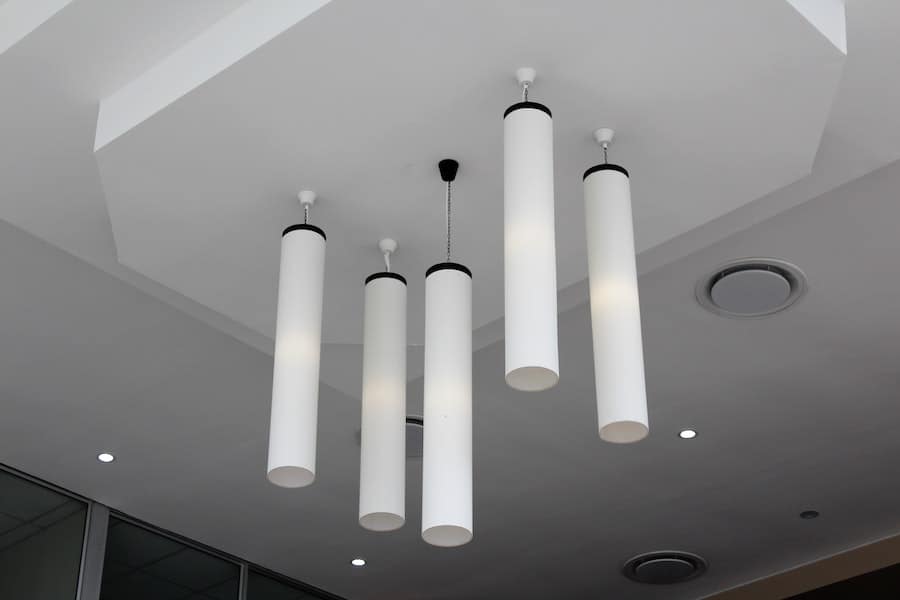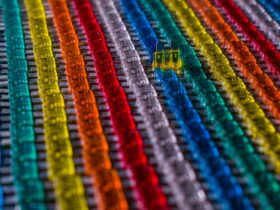Welcome to our comprehensive guide on how to skim-coat a ceiling! If you’ve ever looked up at your ceiling and noticed unsightly cracks, uneven surfaces, or an outdated texture, the skim coating is the perfect solution to achieve a smooth and flawless finish. Skim coating involves applying a thin layer of joint compound to the ceiling, providing a fresh canvas for painting or refinishing. Whether you’re a seasoned DIY enthusiast or a first-timer, our step-by-step instructions and expert tips will walk you through the entire process, ensuring a professional result that will transform your ceiling into a seamless and polished masterpiece. So, let’s roll up our sleeves and get ready to turn your ceiling into a sight to behold!
How To Skim Coat A Ceiling?
Skim coating a ceiling requires attention to detail and patience, but the result is worth the effort. Follow these step-by-step instructions to achieve a smooth and flawless finish:
Preparation: Begin by clearing the room of furniture and fixtures to create a safe and unobstructed work area. Inspect the ceiling for cracks, holes, or imperfections, and patch them up with a joint compound. Ensure the surface is clean and free from dust and debris.
Safety Precautions: Prioritize safety by ensuring proper ventilation and airflow in the room. Wear appropriate Personal Protective Equipment (PPE), including safety goggles, a dust mask, and gloves. Secure the work area with drop cloths or plastic sheets to protect flooring and walls from potential splatters.
Mixing Skim Coat Compound: Choose a high-quality skim coat compound suitable for your ceiling’s needs. Follow the manufacturer’s instructions to mix the compound with water for consistency. Use a drill with a mixing attachment for efficient blending.
Priming the Ceiling (Optional): While priming is not always necessary, it can enhance the adhesion of the skim coat. If you choose to prime, apply a thin coat of primer evenly across the ceiling using a paint roller or brush.
Applying the Skim Coat: Begin applying the skim coat with your chosen method – using a trowel, hawk, and trowel, or a roller and brush. Work in small sections, spreading the compound evenly and smoothly across the surface. Maintain a consistent thickness to avoid visible differences in texture.
Sanding the Surface: Once the skim coat is dry and hardened (usually after 24 hours), carefully inspect the ceiling for imperfections or rough spots. Use fine-grit sandpaper or a pole sander to sand the surface until it is uniformly smooth gently.
Inspecting and Repairing Imperfections: After sanding, inspect the ceiling for any remaining imperfections or uneven spots. Repair these areas by applying a thin layer of additional skim coat compound and repeating the sanding process.
Cleaning and Priming for Painting: Remove any dust and residue from the ceiling, and consider priming the skim-coated surface before painting. Priming helps create an even surface for paint adhesion and enhances the final paint finish.
Painting the Ceiling: Once the primer is dry, apply your chosen paint evenly using a roller or paintbrush. Take your time to ensure complete coverage and flawless result. Finally, inspect the ceiling one last time to ensure the desired finish. Touch up any remaining imperfections or uneven areas as needed.
Types Of Ceilings Suitable For Skim Coating
Skim coating is a versatile technique that can be applied to various ceilings, enhancing their appearance and creating a smooth, uniform surface. While most ceilings can benefit from the skim coating, some types are particularly well-suited for this application. Here are the types of ceilings that are suitable for skim coating:
Popcorn Or Textured Ceilings:
Popcorn ceilings, also known as acoustic or textured ceilings, were popular in the past but are now considered outdated and challenging to clean. Skim coating can effectively cover and smooth out the rough texture, giving the ceiling a modern and fresh look.
Damaged Or Cracked Ceilings:
Ceilings with visible cracks, dents, or imperfections can be effectively repaired using skim coating. The skim coat helps to level the surface and conceal minor damages, creating a flawless finish.
Plasterboard Or Drywall Ceilings:
New or old plasterboard or drywall ceilings are excellent candidates for skim coating. It can hide joint compound seams, minor surface irregularities, and uneven areas, resulting in a seamless and even finish.
Painted Ceilings:
If you want to update the appearance of a painted ceiling without removing the existing paint, skim coating is an ideal solution. It lets you achieve a smooth surface, covering any paint texture or imperfections.
Stippled Ceilings:
Stippled ceilings, or stipple or stucco ceilings, have a textured appearance created using a stippling brush or roller during the painting process. Skim coating can help remove the stipple texture, creating a more modern and polished look.
Low Ceilings:
In rooms with low ceilings, a skim coat can help reflect light more evenly and make the space feel larger and airier. It eliminates shadows caused by surface imperfections and uneven textures.
Ceilings In Renovated Spaces:
During renovations, ceilings might undergo various changes, such as removing light fixtures or adjusting room layouts. Skim coating is an excellent way to achieve a consistent and uniform surface after such modifications.
How To Choose The Right Skim Coat Product?
Consider the type of surface you will be skim coating. Some skim coat products are designed for drywall, while others work better on concrete, plaster, or masonry surfaces. Ensure that your chosen product suits the specific surface you intend to coat.
Determine the purpose of skim coating. If you’re simply looking to create a smooth and even surface, a standard skim coat product should suffice. However, if you need to repair larger cracks or deep imperfections, consider a high-build skim coat with better coverage and filling capabilities.
Skim coat products come in various consistencies, such as powder-based or premixed. Powder-based products require mixing with water, while premixed products are ready to use straight from the container. Choose a consistency that aligns with your skill level and the scale of the project.
Different skim coat products have varying drying times. Some may dry quickly, allowing for faster project completion, while others might require longer drying times, which can be advantageous for larger or more intricate areas.
Consider the application method that best suits your needs. Some skim coat products can be applied with a trowel, while others are suitable for spraying or rolling. Choose a product that aligns with your preferred application technique.
Volatile Organic Compounds (VOCs) are potentially harmful chemicals that can be emitted from certain building materials. If you’re concerned about indoor air quality, opt for a skim coat product with low VOC content or VOC-free.
Look for a skim coat product with excellent adhesion and bonding properties. This ensures that the skim coat adheres securely to the surface and reduces the likelihood of cracking or peeling over time.
Consider the coverage area of the skim coat product. Depending on the brand and type, coverage can vary significantly. Calculate the amount of product needed based on the square footage of the ceiling or surface to be skim coated.
Final Words
In conclusion, skim-coating a ceiling is a valuable skill that can transform the appearance of any room. Following the step-by-step guide outlined in this article, you can achieve a smooth, flawless finish that adds elegance and modernity to your space.
Remember, proper preparation is critical to a successful skim coating project. Clear the room, repair any damages, and sand the ceiling before mixing and applying the skim coat. Take your time during the application process to ensure an even and level surface.
FAQ’s
Is skim coating the same as painting a ceiling?
No, skim coating and painting a ceiling are different processes. Skim coating involves applying a thin layer of joint compound or plaster to create a smooth surface, while painting involves applying paint. Skim coating is typically done before painting to achieve a flawless base for the paint.
Can I skim-coat a textured ceiling, or do I need professional help?
Skim coating a textured ceiling is a DIY project that homeowners can do with basic skills and patience. However, if you need clarification on the process or have extensive ceiling damage, consulting a professional might be a better option.
How long does it take for a skim coat to dry?
The drying time of a skim coat depends on various factors, including the product used, the thickness of the coat, humidity, and temperature. Generally, skim coat compounds take anywhere from 12 hours to 24 hours to dry. It’s essential to follow the manufacturer’s recommendations for drying time.




















Leave a Reply